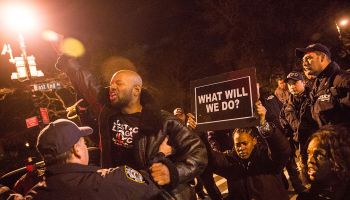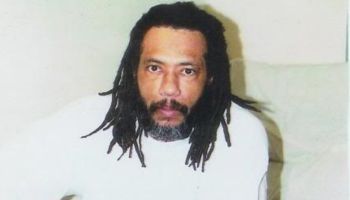Richard Loving looks out from the Jim Crow past with wary eyes, appearing on the screen with a blond crew cut, plaid work shirt, bad teeth and Southern accent.
“He looked like a redneck,” said Philip Hirschkop, a lawyer who soon recognized his mistake — Loving was actually a pioneer for racial equality.
The white bricklayer from Virginia defied stereotypes and centuries of racist laws when he married Mildred Jeter, who was black and Native American. Convicted of violating a law against interracial marriage, the Lovings fought for their rights and won a landmark 1967 Supreme Court case that struck down such bans nationwide.
Their lives are explored in a new documentary, “The Loving Story,” which premieres Tuesday on HBO.
Today, there are more than 4 million “mixed marriages” in the United States, and roughly one in seven new marriages are between people of different ethnicities. But in 1958, when the Lovings’ marriage was ruled illegal and they were banished from their native Virginia, 21 states outlawed interracial unions.
“The Loving Story” details the couple’s nine-year battle to live in Virginia as man and wife. Using evocative photographs, newly unearthed footage and interviews with the Lovings’ daughter and lawyers, the film reveals the power of love to overcome bigotry.
“I came to respect Mildred and Richard so much,” said the film’s director and producer, Nancy Buirski. “I think these people had such high standards and strong principles and in many ways they defied stereotypes.”
“You don’t have to be an activist to change history,” Buirski said. “You just have to believe strongly in something.”
Richard and Mildred grew up near each other in rural Virginia. They courted for a few years before getting married in Washington, D.C., on June 2, 1958, then returned home to live near their families.
On July 14, the sheriff broke into the Lovings’ bedroom in the middle of the night and took them to jail. Judge Leon Bazile sentenced the Lovings to five years in prison, but suspended the sentence as long as they left the state. And Bazile made a statement that demonstrates the immense distance society has traveled since 1958, a statement that is narrated at the start of the film:
“Almighty God created the races: white, black, yellow, Malay and red, and he placed them on separate continents, and but for the interference with His arrangement there would be no cause for such marriages,” Bazile said in court. “The fact that He separated the races shows that he did not intend for the races to mate.”
But “The Loving Story” makes clear that Mildred and Richard Loving were meant for each other.
Numerous still photographs, taken for Life magazine by Grey Villet, capture the intimate glances and gestures shared by soul mates. Archival film depicts mundane moments of daily life — a sock smoothed over a foot; a log tossed into the stove — that become pregnant with meaning when a family is under attack.
Mildred, who died in 2008, does most of the talking, her gentle voice describing the ordeal she endured with her husband and three children. Richard, who was killed by a drunken driver in 1975, says little beyond, “I’m not gon’ divorce her.”
The Lovings moved to Washington to be together, but Mildred was not suited for city life. A friend told her to write to the U.S. attorney general, Robert F. Kennedy, who advised her to contact the American Civil Liberties Union.
Hirschkop and Bernard Cohen were the ACLU lawyers who took the case to the Supreme Court. Their opponents argued that interracial marriages — and the children they produced — were much more likely to have difficulties. They compared Virginia’s law banning such marriages to those prohibiting polygamy or incest.
In 1967, the Supreme Court ruled 9-0 in the Lovings’ favor.
Buirski noted that even though most Americans now say they have no problems with interracial marriage, pockets of resistance have remained.
Laws prohibiting interracial marriage stayed on the books in South Carolina and Alabama until 1998 and 2000, respectively. In 2009, a Louisiana justice of the peace refused to marry a black man and a white woman. “I’m not a racist,” said the official, Keith Bardwell. “I just don’t believe in mixing the races that way.”
In a 2011 Gallup poll, 84 percent of whites and 96 percent of blacks said they approved of interracial marriage.
“It’s not something we can take for granted,” Buirski said.
“Racial identity is an important conversation to have in our culture, and I think the more we bring it to the forefront of our conversation, the better it is for everybody. That’s one reason I don’t see this story as history. I see this as living history.”
A history written by two people who knew their love was true, and who may have glimpsed a better future.
“It’s not so much me and Richard — we could go away,” Mildred says in the film. “It’s the principle. It’s the law. I don’t think it’s right. If we do win, we’ll be helping a lot of people.”
RELATED:
















